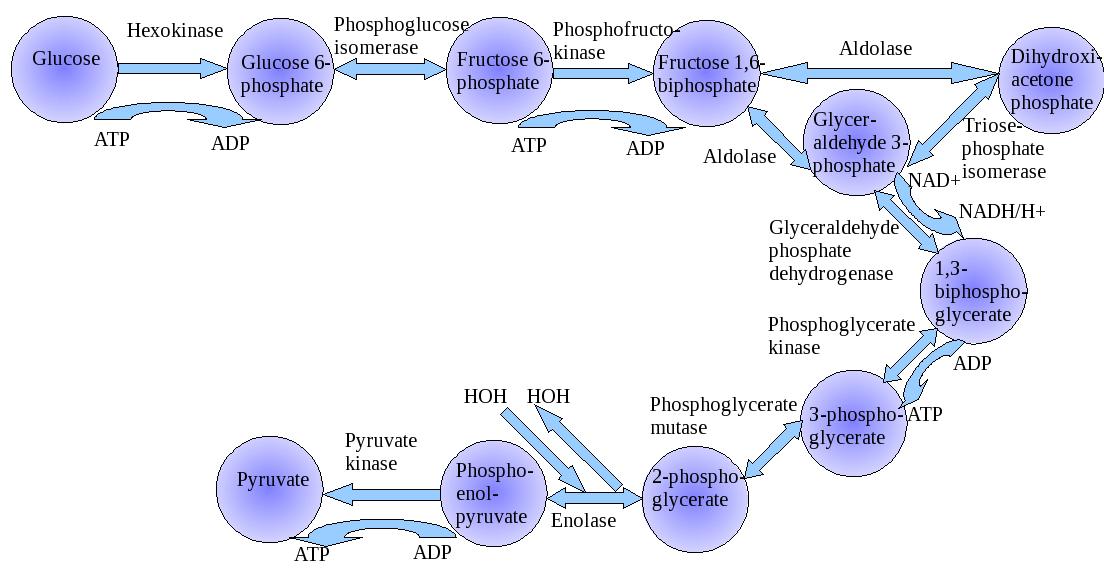Glycolysis (from glycose, an older term for glucose + -lysis degradation) is the metabolic pathway that converts glucose C6H12O6, into pyruvate, CH3COCOO− + H+. The free energy released in this process is used to form the high-energy compounds ATP (adenosine triphosphate) and NADH (reduced nicotinamide adenine dinucleotide). Glycolysis is a determined sequence of ten enzyme-catalyzed reactions.
Glycolysis occurs, with variations, in nearly all organisms, both aerobic and anaerobic. The wide occurrence of glycolysis indicates that it is one of the most ancient known metabolic pathways. Indeed, the reactions that constitute glycolysis and its parallel pathway, the pentose phosphate pathway, occur metal-catalyzed under conditions of the Archean ocean also in the absence of enzymes. Glycolysis could thus have originated from chemical constraints of the prebiotic world.
Glycolysis occurs in most organisms in the cytosol of the cell.The most common type of glycolysis is the Embden–Meyerhof–Parnas (EMP pathway), which was discovered by Gustav Embden, Otto Meyerhof, and Jakub Karol Parnas. Glycolysis also refers to other pathways, such as the Entner–Doudoroff pathway and various heterofermentative and homofermentative pathways. However, the discussion here will be limited to the Embden–Meyerhof–Parnas pathway.
The entire glycolysis pathway can be separated into two phases:
- The Preparatory Phase – in which ATP is consumed and is hence also known as the investment phase
- The Pay Off Phase – in which ATP is produced.




